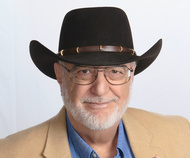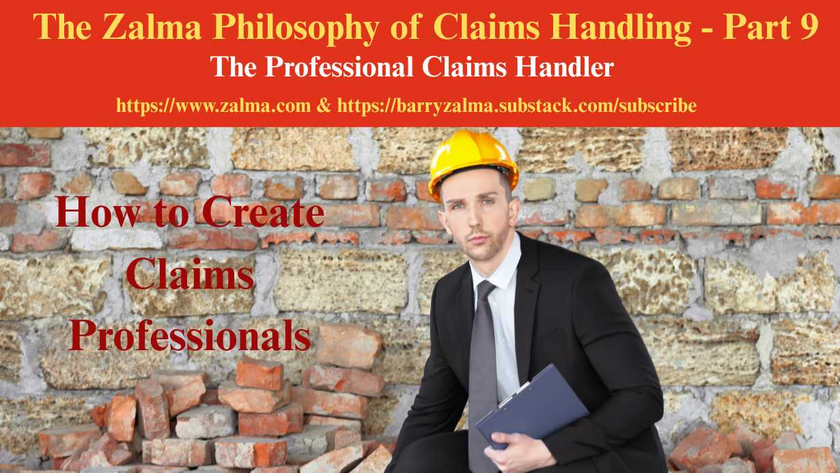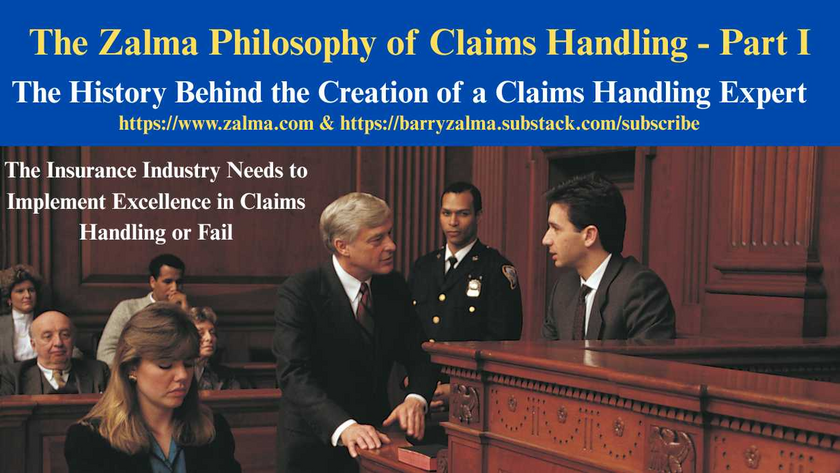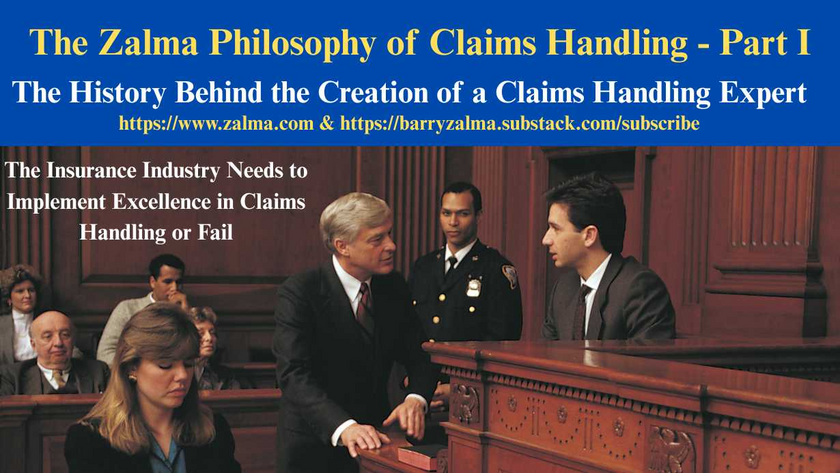
New Books on Insurance Issues from Barry Zalma
Books Needed by Every Insurance Professional
Barry Zalma
just now
Subscribe now
Share
Leave a comment
Read the full article at https://lnkd.in/gejF_34C and at https://zalma.com/blog plus more than 4200 posts.
Books Needed by Every Insurance Professional
“Insurance Fraudsters Deserve No Quarter”
New Book That Explains How to Defeat or Deter Insurance Fraud
What every insurer should know about how it can be proactive in the efforts against insurance fraud by refusing to pay every fraudulent claim.
How Giving No Quarter Worked
Many years ago a client I represented was offended that an insured tried to defraud him and the people who were names in the syndicate he represented at Lloyd’s, London. I walked the Underwriter through the debris of the house that was burned, showed him some of the remains of the allegedly highly valuable fine arts, and then explained how he was deceived into issuing the policy. I was the attorney for Lloyd’s underwriters for the fine arts and Imperial Casualty for the homeowners policy. Once it became clear to the Underwriter I was given the following instruction:“Take No Prisoners!” The military instruction to give no mercy to the enemy. Typically if you give or grant no quarter, you treat someone—usually an opponent or foe of some kind—harshly. You don’t take pity on them or give them any leeway or concession. That is what I did. The claim was denied, the policy was rescinded, and the bad faith suit that resulted was litigated without quarter or concession. It took more than five years, a motion for summary judgment, an appeal, and eventually a judgment in favor of the insurers that resulted in payment to the insurers of every dollar advanced and every dollar expended in investigation and defense of the bad faith suit. That was followed by suits against the claims adjuster, death threats and a bomb threat that took 15 years of my professional life. The appellate decision can be read at Imperial Casualty & Indemnity Co. v. Sogomonian, 243 Cal.Rptr. 639, 198 Cal.App.3d 169 (Cal. App. 1988).After Mr. Sogomonian and his co-defendants were compelled to pay fraudulent claims against Imperial and the Lloyd’s underwriters dropped precipitously. Giving no quarter to a fraud perpetrator not only defeated a fraudulent claim but deterred others from attempting fraud.The Imperial v. Sogomonian case and many similar cases is why I am convinced that giving no quarter to a fraud perpetrator is the best way to deter and defeat insurance fraud and why I wrote this book to convince more insurance professionals to emulate the insurers that defeated the Sogomonian attempt at fraud.
How to Proactively Work to Defeat or Deter Insurance Fraud
Available as a Kindle Edition, a Paperback or a Hardcover
What every insurer should know about how it can be proactive in the efforts against insurance fraud by refusing to pay every fraudulent claim, by refusing to settle litigation brought by fraud perpetrators and by proactively taking the fraud perpetrators to court by seeking damages for common law fraud and take the profit out of insurance fraud.No one knows the true extent of insurance fraud because most attempts at insurance fraud succeed. Estimates are extrapolated from those few people who attempt insurance fraud that are caught.Insurance fraud is a crime in most states of the United States and in most countries the usual victims of the crime of insurance fraud are insurers. Some creative people have created fraudulent insurance companies that exist to defraud the insurance buying public who acquire insurance from the fraudulent insurers.The crime of insurance fraud is ubiquitous and is committed by every race, gender, national origin, religion, or sexual orientation.Unlike other victims of crime state legislatures require insurers create special investigative units (SIU) to thoroughly investigate all potential insurance fraud and present evidence to the authorities so that they can prosecute insurance fraud. Unfortunately, experience of the insurance industry has established that even when the insurer’s SIU presents a case to the state’s Fraud Division or Fraud Bureau for criminal prosecution, it is rare that a prosecution is commenced and a conviction obtained.State insurance departments brag about convictions in double digits when they receive as many as 1500 reports of suspected fraudulent claims every 30 days. Prosecutors dislike insurance fraud cases because they are usually document heavy while an assault, rape, murder or drunk driving are usually summarized by a single police report and are, therefore, relatively easy to prosecute to a jury or obtain a plea of guilty.Some insurers are buying Artificial Intelligence software to detect insurance fraud. Others hire retired police officers to operate the SIU and ignore their experienced insurance claims handlers.Most do the minimum necessary to fulfill the requirements of the anti-fraud statutes and regulations concluding that it is better to pay the fraudsters than to fight fraud attempts proactively.All insurers and those who regulate insurers agree that regardless of where the insurance is sold, regardless of where the promises made by an insurance policy are required to indemnify an insured, insurance fraud is a serious problem for the insurance industry. All attempt to deter or defeat insurance fraud to one extent or another.All recognize that if there is an insurance claims that is denied for fraud it is axiomatic that the insured, so accused, will file suit for breach of contract and for the tort of bad faith. Bad faith lawsuits, even when they fail, take the value out of the effort to deter or defeat insurance fraud since defense of the bad faith suit will usually exceed the amount of the claim that was denied.On an individual claim basis it is never cost effective to reject the claim for fraud. However, knowledgeable insurance fraud investigative professionals recognize that an aggressive effort against insurance fraud, refusal to pay a settlement to avoid litigation, and forcing the fraud perpetrator to litigate through trial and appeal will become known to those who make a living defrauding insurers, that the insurer is not a pushover and will avoid fraud attempts against that insurer and move to insurers the fraud perpetrators know will pay rather than fight.Available as a paperback here. Available as a hardcover here. Available as a Kindle Book here.
“The Examination Under Oath to Resolve Insurance Claims”
The Most Effective Tool Available to Insurers to Defeat Attempts at Insurance Fraud & to Resolve Questionable Claims
A Tool Available to Insurers to Thoroughly Investigate Claims and Work to Defeat Fraud
The insurance Examination Under Oath (“EUO”) is a condition precedent to indemnity under a first party property insurance policy that allows an insurer to compel an insured to submit to questioning from a representative of the insurer under oath. It is a formal type of interview authorized by an insurance contract. The EUO is taken under the authority provided by the agreement of the insured when he, she or it acquires a policy of insurance, to submit to the requirement of the insurer that the insured appear and give sworn. Failure to appear and testify is considered a breach of a material condition that can cause the insured to lose the right to indemnity.
The EUO is conducted before a notary and a certified shorthand reporter. The reporter is present to give the oath to the person interviewed and record the entire conversation and prepare a transcript, in question and answer format, to be read, reviewed, corrected and signed by the witness under penalty of perjury or by an oath taken before a notary or judge.
The EUO is a tool sparingly used by insurers in the United States. A professional insurer will only require an insured to submit to an EUO when a thorough claims investigation raises questions:
about the application of the coverage to the facts of the loss,
the potentiality that a fraud is being attempted, or
to assist the insured in the obligation to prove to the insurer the cause and amount of loss.
Although seldom used the EUO is an important tool needed by insurers when there is a question of coverage, destruction of evidence needed to prove a compensable loss or the amount of loss or evidence indicating the potential that a fraud is being attempted. The Reason for the Examination Under Oath In 1884, the U.S. Supreme Court explained the purpose of the EUO, as follows: “The object of the provisions in the policies of insurance, requiring the assured to submit himself to an EUO, to be reduced to writing, was to enable the company to possess itself of all knowledge, and all information as to other sources and means of knowledge, in regard to the facts, material to their rights, to enable them to decide upon their obligations, and to protect them against false claims. And every interrogatory that was relevant and pertinent in such an examination was material, in the sense that a true answer to it was of the substance of the obligation of the assured. A false answer as to any matter of fact material to the inquiry, would be fraudulent. If it made, with intent to deceive the insurer, would be fraudulent. If it accomplished its result, it would be a fraud effected; if it failed it would be a fraud attempted. And if the matter were material and the statement false, to the knowledge of the party making it, and willfully made, the intention to deceive the insurer would be necessarily implied, for the law presumes every man to intend the natural consequences of his acts. No one can be permitted to say, in respect to his own statements upon a material matter, that he did not expect to be believed; and if they are knowingly false and willfully made, the fact that they are material is proof of an attempted fraud, because their materiality, in the eye of the law, consists in their tendency to influence the conduct of the party who has an interest in them, and to whom they are addressed.” [Claflin v. Commonwealth Ins. Co., 110 U.S. 81, 3 S.Ct. 507, 28 L.Ed. 76 (1884)] (Emphasis added)
Available as a Kindle book Available as a paperback. Available as a hardcover.
“Insurance Fraud – Volume I & Volume II Second Edition”
Insurance fraud continually takes more money each year than it did the last from the insurance buying public. No one knows the actual amount with any certainty because most attempts at insurance fraud succeed. Estimates of the extent of insurance fraud in the United States range from $87 billion to more than $300 billion every year. Insurers and government backed pseudo-insurers can only estimate the extent they lose to fraudulent claims. Lack of sufficient investigation and prosecution of insurance criminals is endemic. Most insurance fraud criminals are not detected. Those that are detected do so because they became greedy, sloppy and unprofessional so that the attempted fraud becomes so obvious it cannot be ignored. No one will ever be able to place an exact number on the amount lost to insurance fraud. Everyone who has looked at the issue knows – whether based on their heart, their gut or empirical fact determined from convictions for the crime of insurance fraud – that the number is enormous. When insurers and governments put on a serious effort to reduce the amount of insurance fraud the number of claims presented to insurers and the pseudo-government-based or funded insurers drops logarithmically. The effort to stop insurance fraud against Medicare and Medicaid has increased in recent years. This book contains appellate decisions regarding insurance fraud from federal and state appellate courts across the country and full text of many insurance fraud statutes. It is available as both a legal research tool and a product to assist insurers, insurance company personnel, independent insurance adjusters, special investigation unit investigators, state fraud investigators and insurance lawyers to become effective persons involved in the attempt to defeat or reduce the effect of insurance fraud.
Volume I of Insurance Fraud includes the following:
Insurance Fraud is Epidemic.
Measuring Insurance Fraud
What is Insurance Fraud?
Arson for profit.
Soft Fraud
Hard Fraud
Insurance Against the Risk of Loss of Real or Personal Property
Liability Insurance
Interpretation of Insurance Contracts
Ethics & The Insurance Fraud Investigation
Fraud by Professionals
First Party Property Fraud
Health Insurance Fraud
Insurance Fraud is a Crime
Fraud Created by Legal Professionals
Fraud in the Acquisition of Insurance
Fraud in the Presentation of a Claim
Investigation of a Claim for Fortuity
Investigating Fraud
Arson for Profit Investigation
Investigation Methods
Evaluation of Medical Records
Available as a Kindle book; Available as a Hardcover; Available as a Paperback
Volume II of Insurance Fraud provides coverage of the issues not covered by Volume I and, together with Volume I becomes a complete manual for how lawyers and claims people can effectively work to deter or defeat insurance fraud.
INSURANCE FRAUD IS EPIDEMIC
The following are covered in this volume including:
The Federal Crime of Insurance Fraud
Insurance Fraud as a State Crime
Insurance Fraud by Insurers
California SIU Regulations
Investigating Insurance Fraud
The Examination Under Oath
The Taking of an Examination Under Oath
The Mutability of Memory
Rescission
Insurance Fraud Statutes
The Tort of Bad Faith and Insurance Fraud
Sample California Rescission Letters
Sample Complaint for Declaratory Relief
Form of Mutual Rescission Agreement
Fom Declaration of Underwriter in Support of Rescission
Insurance Fraud Statutes
Outline of Training for Integral Anti-Fraud Personnel
Form of EUO Demand Letter
EUO Testimony admitting fraud.
Available as a Kindle book; Available as a Hardcover; Available as a Paperback
“Ethics for the Insurance Professional – Third Edition”
How The Covenant of Good Faith and Fair Dealing Requires Insurance Professionals to Act Ethically and With Utmost Good Faith and Fair Dealing
by Barry Zalma
Ethics is Essential to the Insurance Professional
Insurance is, by definition, a business of the utmost good faith. This means that both parties to the contract of insurance must act fairly and in good faith to each other and do nothing that will deprive the other of the benefits the contract of insurance promised.
In essence the covenant requires that each party to the contract of insurance treat the other ethically, fairly and in good faith.
For details on other insurance books by Barry Zalma Go https://zalma.com/blog/insurance-claims-library/
No Right to Subrogation Against Tenant
Post 5231
Not Fair to Require Tenant to Pay for Damage Insured by LandlordSee the video at https://lnkd.in/gFkrp_6M and at https://lnkd.in/gQdFQBWj and at https://zalma.com/blog plus more than 5200 posts.
See the video at and at
For Insurer to Subrogate Lease Must Require Tenant to Obtain Insurance for the Benefit of the Landlord
In AmGUARD Insurance Co. v. Tyrone Ellis and Shakyra Ellis, U.S. District Court, District of Connecticut Civil No. 3:25-cv-946 (JCH) (November 19, 2025), Judge, Janet C. Hall the defendant’s Motion to Dismiss the Amended Complaint on the basis of Connecticut’s anti-subrogation doctrine required dismissal.
KEY FACTS
Landlord Michael Caldwell, a Connecticut citizen, owned a multi-family building in Windsor, Connecticut. Defendants Tyrone and Shakyra Ellis were residential tenants in the building. On or about March 1, 2025, a fire ...

Debt Resulting from Fraud is Not Dischargeable in Bankruptcy
Post 5230
Read the full article at https://lnkd.in/gpF3y7Vd, see the video at https://lnkd.in/gR5cVcbY and at https://lnkd.in/gch6Q4_V, and at https://zalma.com/blog plus more than 5200 posts.
Knowing Misappropriation and Conversion of Funds is Fraud
In re Matthew Jene Tubbs (Bankr. N.D. Tex., Fort Worth Div., No. 22-42728-MXM-7; Adv. No. 23-04019-mxm), October 15, 2025 .
Key Facts
Plaintiffs (Robles) and Defendant (Tubbs) met through their church; both held leadership roles. In Feb 2021 Robles home suffered major water damage from Winter Storm Uri and insurance paid $173,000.
In the Fall of 2021: Tubbs represented to Mr. Robles that he personally built a newer house and large barn on his parents’ property “with his own hands” (except foundation/insulation). That he had 10 years’ experience overseeing window/door installations at a major home-improvement chain, was a licensed contractor (false) and carried general contractor liability insurance.
Relying on ...
See full video at https://lnkd.in/gtnsH3SW and at https://lnkd.in/geJ4FseF, and at https://zalma.com/ and at https://lnkd.in/gC2wmzqZ.
ZIFL-Volume 29 Number 22
THE SOURCE FOR THE INSURANCE FRAUD PROFESSIONAL
Post 5228
Zalma’s Insurance Fraud Letter (ZIFL) continues its 29th year of publication dedicated to those involved in reducing the effect of insurance fraud. ZIFL is published 24 times a year by ClaimSchool and is written by Barry Zalma. It is provided FREE to anyone who visits the site at http://zalma.com/zalmas-insurance-fraud-letter-2/
Read the full 20 page issue of ZIFL at http://zalma.com/blog/wp-content/uploads/2025/11/ZIFL-11-15-2025-1.pdf
Man Bites Dog Story – Hertz Sues Alleged Fraudsters
Hertz Successfully Refuses to Pay Alleged Fraudulent Health Care Providers
Proactive Victim of Fraud Defeats Health Care Providers
More McClenny Moseley & Associates Issues
This is ZIFL’s thirty eighth installment of the saga of McClenny, Moseley & Associates and its problems with the federal courts in the State of Louisiana and what appears to be ...
The Professional Claims Handler
Post 5219
Posted on October 31, 2025 by Barry Zalma
An Insurance claims professionals should be a person who:
Can read and understand the insurance policies issued by the insurer.
Understands the promises made by the policy.
Understand their obligation, as an insurer’s claims staff, to fulfill the promises made.
Are competent investigators.
Have empathy and recognize the difference between empathy and sympathy.
Understand medicine relating to traumatic injuries and are sufficiently versed in tort law to deal with lawyers as equals.
Understand how to repair damage to real and personal property and the value of the repairs or the property.
Understand how to negotiate a fair and reasonable settlement with the insured that is fair and reasonable to both the insured and the insurer.
How to Create Claims Professionals
To avoid fraudulent claims, claims of breach of contract, bad faith, punitive damages, unresolved losses, and to make a profit, insurers ...

The History Behind the Creation of a Claims Handling Expert
The Insurance Industry Needs to Implement Excellence in Claims Handling or Fail
Post 5210
This is a change from my normal blog postings. It is my attempt. in more than one post, to explain the need for professional claims representatives who comply with the basic custom and practice of the insurance industry. This statement of my philosophy on claims handling starts with my history as a claims adjuster, insurance defense and coverage lawyer and insurance claims handling expert.
My Training to be an Insurance Claims Adjuster
When I was discharged from the US Army in 1967 I was hired as an insurance adjuster trainee by a professional and well respected insurance company. The insurer took a chance on me because I had been an Army Intelligence Investigator for my three years in the military and could use that training and experience to be a basis to become a professional insurance adjuster.
I was initially sat at a desk reading a text-book on insurance ...

The History Behind the Creation of a Claims Handling Expert
The Insurance Industry Needs to Implement Excellence in Claims Handling or Fail
Post 5210
This is a change from my normal blog postings. It is my attempt. in more than one post, to explain the need for professional claims representatives who comply with the basic custom and practice of the insurance industry. This statement of my philosophy on claims handling starts with my history as a claims adjuster, insurance defense and coverage lawyer and insurance claims handling expert.
My Training to be an Insurance Claims Adjuster
When I was discharged from the US Army in 1967 I was hired as an insurance adjuster trainee by a professional and well respected insurance company. The insurer took a chance on me because I had been an Army Intelligence Investigator for my three years in the military and could use that training and experience to be a basis to become a professional insurance adjuster.
I was initially sat at a desk reading a text-book on insurance ...














